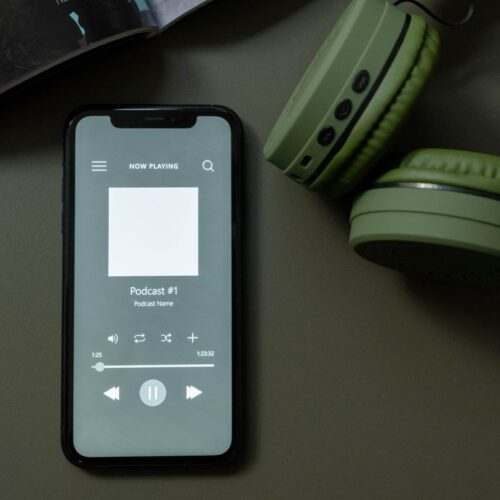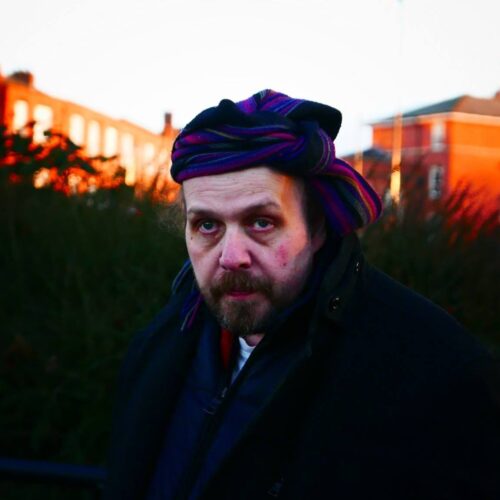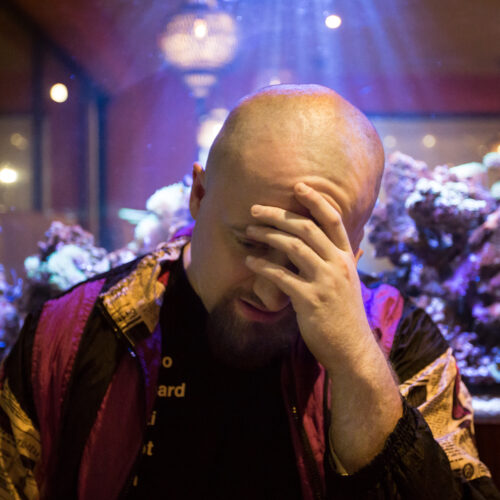
Finding New Paths – Part 1

As many composition tutors will tell you, the key to developing properly as a composer is to be able to hear the music you are writing. This presents the distance learning student with a particular problem, namely, where to find performers.
Students, writing for instruments they don’t play, have to be able to network in order to meet instrumentalists and singers who can realise their art. It could be said that music isn’t really music until it is heard!
But what if you live more remotely, or are writing for large ensembles, where the opportunities to collaborate are even fewer? This is a problem faced not only by distance learners but by students at traditional university music departments.
Users of music notation software will be familiar with the often less-than-impressive computerised playback quality. This can give the composer an impression of what it might sound like, but can also require a fair bit of imagination in terms of how balance might be achieved within the ensemble. To others, this basic MIDI playback is often quite synthetic and off-putting.
However MIDI is gradually taking great leaps forward in terms of audio quality. Digital Audio Workstations and ‘Virtual Instrument libraries’ use many small clips of audio recorded from the actual instruments to play back the score. In fact, many people would have already heard music produced this way on TV and Film without even realising it. You can sometimes only tell something has been created synthetically when you’ve been warned in advance!
At a recent masterclass on achieving a realistic balanced MIDI sound at BFI Southbank, engineers and composers David W Hearn and Stu Kennedy played a well known piece of film music to a room full of composers, asking them to raise their hands when they could tell it was a MIDI realisation. By the end of the track, most of the hands were up, and it was revealed that despite most having heard something synthetic, it was actually a genuine orchestral recording! So perhaps there is a performable outlet for composers struggling to create a more accurate realisation of their work.
In my final year studying composition with the Open College of the Arts, I chose to write for large orchestra under the supervision of Patric Standford; a seven movement orchestral suite based on different areas of my home county of Cornwall. I didn’t want ‘The Kernow Suite’ to be confined to the page, and without a symphony orchestra at my disposal, I decided to give ‘virtual instruments’ a go. Clearly without the same resources as the Film/TV composers it was going to be difficult, but I was pleased enough with the sound to investigate further. See what you think.
23 thoughts on “Finding New Paths – Part 1”
Leave a Reply
> Next Post Everything drawn on a page is line…..
< Previous Post An exhibition entry






Chris I thought that this was a great job in both composition and sequencing, very realistic. I’d love to know what orchestral library and sequencing program you used. Currently I’m using Logic as a sequencer and the East West Quantum Leap Symphonic Orchestra library.
Hi Trevor. I’m using Cubase as a sequencer and EastWest’s Quantum Symphonic Orchestra Platinum. I also use their Symphonic Choirs and Goliath libraries. I’d love to get hold of their Hollywood Strings and Hollywood Brass (plus some libraries from other companies!) but it’s hard to know where to stop really!
I find the three mic positions in the platinum version of EWQL symphonic orchestra gives you so much extra control of the sound, however I’m still learning the software myself. I have symphonic choirs as well but since I’m new to orchestral composition I’ve not had a chance to use it yet in a score. I hear the Vienna Symphonic Orchestra is a great collection as well. I’m using Finale music notation software and having some problems with the software itself. If you don’t mind me asking what notation software do you use?
I use Sibelius, but only for scoring purposes. I prefer to play in all of the tracks to the sequencer as all the little ‘mistakes’ make for a more realistic sound!
Hi Chris, I am very impressed, I know from my own attempts just how difficult it is to get a really good computer rendition of orchestral music. This really does sound good.
Hi Chris, my partner and I have listened, and we enjoyed the music very much. I think the 2nd movement is my favourite. However, the sound is pretty impressive and I am in awe of your technical expertise as well as your composing skills! I haven’t delved into this area at all, but my daughters use LogicPro. To add to Trevor’s post, Finale drove me mad, Sibelius is definitely best for scoring and OK to listen back for the purpose of your own checking. But I haven’t made the most of Sibelius’s playback system, let alone wrestle with other programmes! Well done Chris.
Many thanks Fionagh & Fiona! With the work being put into these libraries now, who knows just how much better they’re going to get? Obviously it would be great if there were more opportunities (and funding) for student composers to have access to orchestra, but I feel this is becoming more and more of an alternative.
Chris, very well done. Thanks for sharing your music especially as it is a source of encouragement to early learners like myself.
I use Sonar and Sibelius but find that everything is such a massive learning curve that I do get discouraged because I just want to create the music!!! Lazy bones I know. But your success with the midi will make me go back to it and use it more. I have an old Roland JV1080 with the orchestral module but it works fine at the level I am at. I also have the luxury of Quantum Leap ‘Gypsy’ which is waiting patiently for me to explore possibilities!
We composers should be braver at sharing our music – the art students in other media seem to be less bashful!!!
Hi Kris!
I’ve had my eye on QL Gypsy for a while, let me know how it works out, it sounds amazing.
As you say, we composers should be braver sharing our music, it’s useful for everyone.
And then comes learning compression, EQ, reverbs and small realistic effects, mixing techniques and mastering! The studies never end! And this is what we like, no? (c:
I know what you mean Mike, the more you get into music technology the more new things spring up to have to get your head around! Fun though. 🙂
Hi again Chris, your post inspired me to have a go at producing a version of some of my work using Cubase, I have posted then results here on my blog: http://www.fionacoulter.com/blog/folk-song-fantasia-a-new-rendition/
This was exported from Finale as a midi file, and imported into Cubase, and uses the Garritan Personal orchestra as a virtual instrument. The sounds are probably not as good as East West but it is much less expensive, I would recommend it to anyone who wants to start experimenting with this approach.
Regarding the question of Finale versus Sibelius, I used Finale for a long time, then started using Sibelius recently and found it very frustrating. I think that the problem is that they are sufficiently different that whicheve software you are familiar with you are going to find the other one annoyingly frustrating!
Hi Fiona, it’s a surprising difference isn’t it? As you say Garritan is much more reasonably priced than Eastwest, considering what you can do with it. I think they bundle it with Sibelius now, or something similar.
Things get very expensive the more you get into sound libraries, not least as you often need more than one PC to run them properly. The professionals are using different instruments handpicked from across the different libraries available, which is quite an investment to make, not least as technology relentlessly marches on!
There are some sounds from Garritan Personal Orchestra bundled with Finale (who now own Garritan incidentally), but they are not nearly as good as the standalone version of GPO, also I don’t think it is possible to make them work with Cubase.
If you buy the standalone version of GPO (which is about £100) you get a VST plugin which can work with Cubase, as well as a much wider range of instruments and better quality. Also you can use it with Sibelius as well in much the same way as with the Sibelius sounds.
They also do a world instruments library which looks like it might be quite interesting to play around with, I don’t know if it would work with notation software though.
Hi Chris
Wow, what a piece of good music! I really enjoyed your composition. I hope you don’t mind me asking, I am thinking of doing the ‘Music Composition’ courses starting with level one. I have no experience of music sequencers and wondered whether I should look at learning some basics before enrolling on the course. Did you have an understanding of sequencers before you enrolled? I look forward to hearing from you!
Kind regards
Rob
Hi Robert,
I’m sure you’d enjoy the Composing 1 course!
I had some experience of using sequencers before enrolling, although I must stress they’re not part of the course, but another way in which to ‘mock up’ your compositions.
OCA recommend students use a notation program, such as Sibelius, on the course, which acts as a basic sequencer by allowing you to hear what you’ve written. This is more than adequate for the course, but you may find yourself exploring other paths during your studies as an aside. There is a bit about this on the Music Course FAQs ( http://www.oca-uk.com/help/music-faqs#k4 ).
If you have any other queries about the course please do feel free to email me direct, or alternatively the OCA ( http://www.oca-uk.com ) or the OCASA student rep Elaine Goodall ( http://www.ocasa.org.uk/ ).
All the best,
Chris
Hi Chris
Thank you for your quick response. Would you mind forwarding me your dect email address as I don’t know where to find this.
Thank you.
Kind regards
Rob
Have emailed you Rob…
That was meant to say ‘direct’ email address.
Thanks
Rob
I don’t have any musical expertise but this piece of music sounds very resounding and majestic and very enjoyable to listen to.
Many thanks Catherine! 🙂